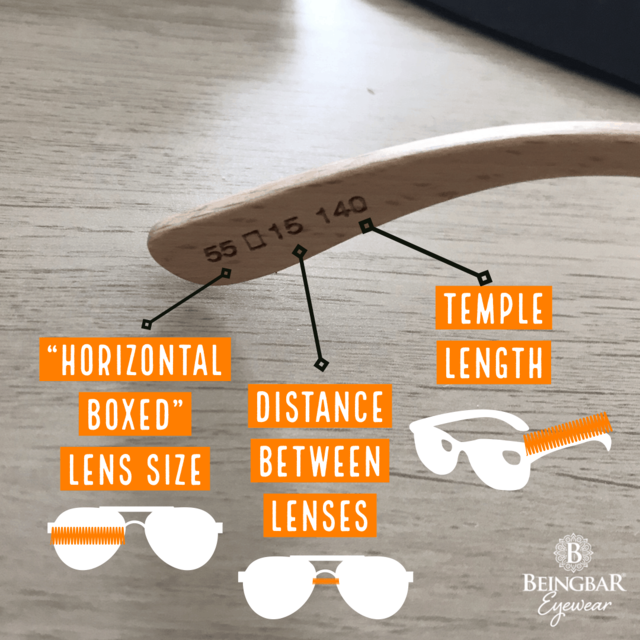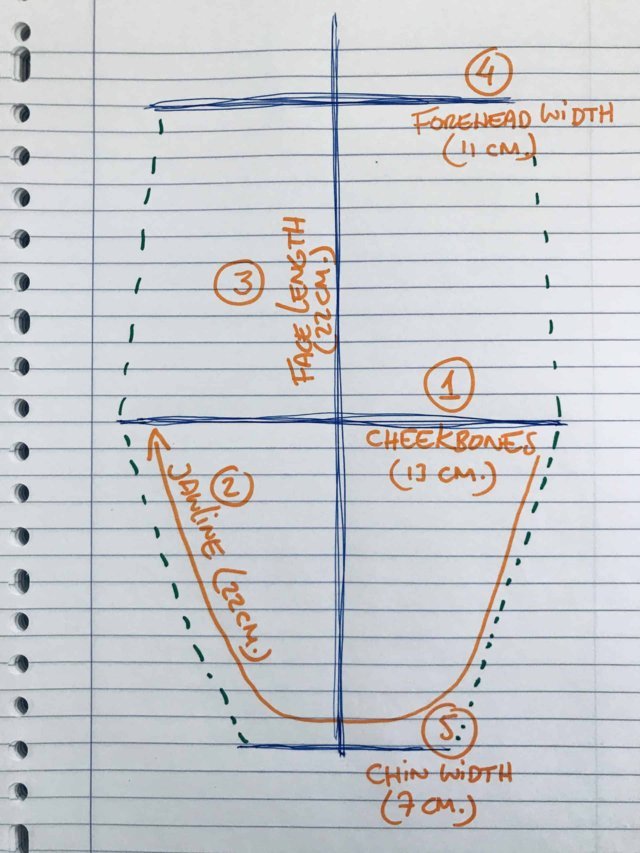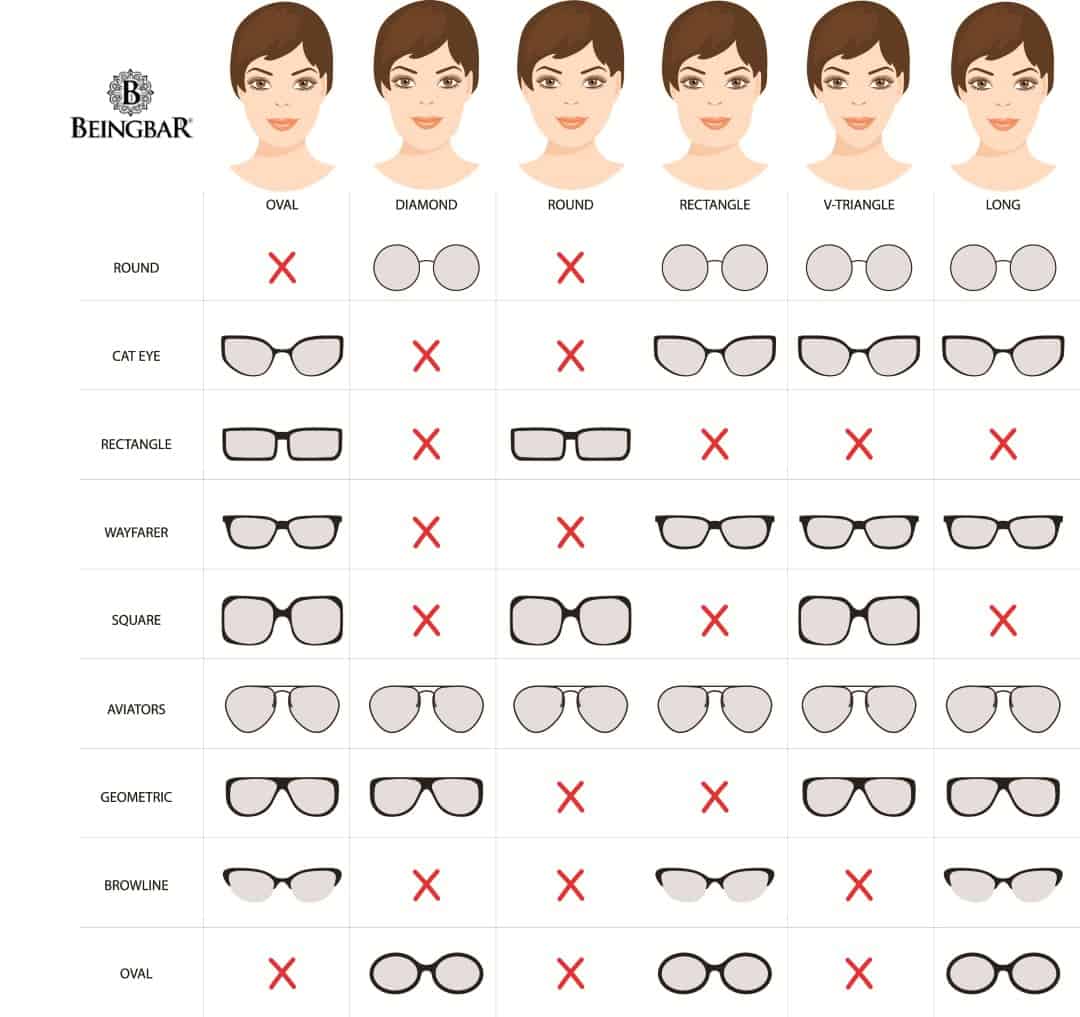Sunglass size explained
Have you ever tried on someone else's sunglasses only to find out they didn't fit well? It does not happen very often but it does happen. It is because the size or their sunglass does not match your face shape, size or features. Or a combination of these.
But how exactly does it work? We will explain it all right here.
Sizes of sunglasses and glasses. How does it work?
Sunglasses come in different shapes and sizes. It's not like with sizes of clothing, because the standard deviation is a lot lower. But there are different sizes nontheless. Manufacturers of eyewear have a pretty good picture of how the distribution of sizes is per country. So in most (online) stores you wil find the sizes that fit you perfectly.
Sizes of spectacles matter a lot
Most people do not really care about the actual sunglasses size, because the average size often is good enough. However, if you need spectacles with corrective lenses it becomes more important. Some people cannot see without their specs. Why you ask? Well, imagine they are not the right size and they drop on the floor. Some people cannot see well enough to find them back. And if you're really unlucky they could break.

Sunglasses size indication on the inside of the temple
Sizing of sunglasses
Again, for sunglasses the size is often less of an issue. Unlike a pair of jeans that either fit you or they don't, your sunnies will fit you more or less anyway. But if you want to understand sizing of sunglasses and spectacles, here are all the details you need.
On the inside of the temples or on the eartip you see the following numbers that indicate the size:
- "Horizontal Boxed" Lens Size: this is the horizontal distance of one lens in mm
- Distance between lenses: this is the space to fit your nose in. Big noses require a bigger distance between the lenses
- Temple length: this is the full lenth of one of the temples, including the ear tip
These three are mostly indicated on the inside of the temple. At least for quality sunglasses.
- Another size that can be of importance, is the total width of the frame. This should of course match the width of your face. This is normally not indicated because you can easily calculate it yourself. It's twize the Horizontal Boxed Lens Size (because you have two lenses), plus the distance between both.
In the example in the picture below the lens has a horizontal diameter of 55 mm. The distance between the lenses is 15 mm. So the width of the entire frame is:
55 + 55 + 15 = 125 mm = 12.5 cm.
The legs are often not placed in a perfect 90 degrees angle, so I normally add 5 to 10 mm to the total. So the sunglasses in the picture are perfect for someone with a face width from temple to temple of 13 cm (I explain this later in this article).

Sunglasses and eyewear printed sizes explained
So, how do you determine what size sunglasses or spectacles you need? In this easy step-by-step tutorial we guide you through the steps of measuring the sunglasses size you need, as well as the perfect sunglasses shape that fits your face shape.
How to choose sunglasses size:
STEP 1: Measure from cheekbone to cheekbone
First you need to know the sunglass size and requirements for your face. Take a ruler or a measuring tape and measure the distance between your two temples. you are looking for the exact distance from the outside of your left cheekbone to the outside of your right cheekbone. As the name implies, your cheekbones are the hard boney parts of your cheeks at the outside of your face, at the height of your nose.
How to measure best Sunglass Size:
So, measure in one straight line, from cheekbone to cheekbone. I find that the easiest way to do this is to take a ruler (straight line) and stand in front of a mirror. Not too slose though, so the image (and distance) does not distort too much.
Write the number down, preferably in cm. But if you choose other units, be sure you are consistent and stick with it in every step.
STEP 2: Measure your jawline
What you want to do next is measure the botton part of your face. So this time take a tape measurer or a piece of rope and pull it under your chin. Hold the two ends of the rope just below your ears. The length of the ropeor tape measurer is the size of your jawline.
Also write this number down, either in cm or inches, depending on what you did before.
STEP 3: Measure the length of your face
This is an easier one. You should measure how long your face is, from the start of your hair line on your head to the bottom of your chin. Your face length determines what type of eyewear shape you should or should not wear. And if you have decided on the frame shape you want, it also determines the lens height. Don't worry, I'll explain this later.
Also write this number down.
STEP 4: Measure the width of your forehead
Take the sides of you hairline. And if you do not have a hairline, simply measure from one side of your forehead to the other. You should be measuring from the bone you feel on the outside of your eyebrow to the same bone on the other side of your face.
This size also determines what face shapes suit your face best.
STEP 5: Measure your chin width
The easiest way to do this is by measuring the distance between the two corners of your mouth.
You now have five sizes
Mine look like this (in centimeters):
- Cheekbone to cheekbone: 13 cm.
- Jawline: 23 cm.
- Face length: 22 cm.
- Forehead width: 11 cm.
- Chin width: 7 cm.
Draw your face with your unique dimensions
Take a piece of paper and draw up four lines with these shapes.
Mine looks like this, but yours will probably be different:

Measure your face dimensions to determine your face shape
Determine your face shape
Now, determine your face shape. Look at the picture you drew and see what shape in the chart below comes closest. It's no exact science. It's about the high level shape you see from a distance. Look past the gender and hairstyle in the pictures and try to look at the face shape only.
Determine your eyewear shape
With my example the Long face shape comes closest. For me a round, cat eye, wayfarer, aviator, geo, brow or oval shape would fit. I personally prefer the wayfarer and aviator styles. So that will be my choice when I would be looking for shades (if I didn't make them that is).

BEINGBAR Sun Eyewear Shape Selector Chart
Small size sunglasses
Some people have a smaller size head shape and require specific sizes sunglasses. In the eyewear business (just like with fashion) some people call this "petite". The choice in sunglasses and spectacles is a little bit more limited than for more generic sizes. But more brands jump in this petite niche and have nice looking ranges and variations.
The ultimate guide to Sunglass Size
So with this guide you should now be able to find the perfect sunglasses for you. If you buy your sunnies at BEINGBAR.COM you already know that we indicate the sizes clearly on the product pages of our eyewear. And we show the sizes on the inside of every product. And if for some reason you receive your BEINGBAR and you feel that they are not the best fit, you can return or exchange them for another size. Just know that this rarely happens.

The right sunglasses size matters in an active lifestyle
Want to read more? Become a member for free!
Do you want to read more about eyewear and sunglasses? Hand built shades made with sustainable, natural materials like fast growing bamboo and wood? And are you looking for sunglasses that are truly made to last? You should take a look here.
And if you enjoyed this article, we have several new posts every single week. Stay in the know and sign up for free. You'll be part of the BEINGBAR movement of people that make conscious choices. And not just settle for the obvious. Know more on BEINGBAR.
Speak soon,
Warren.


